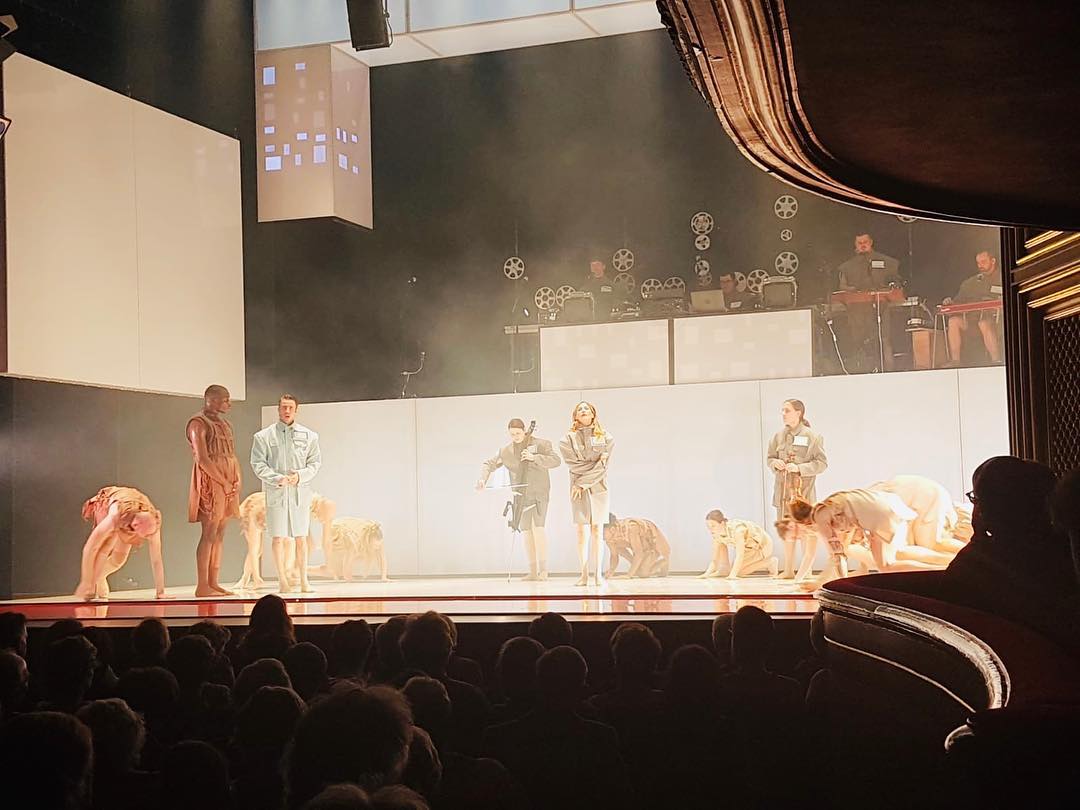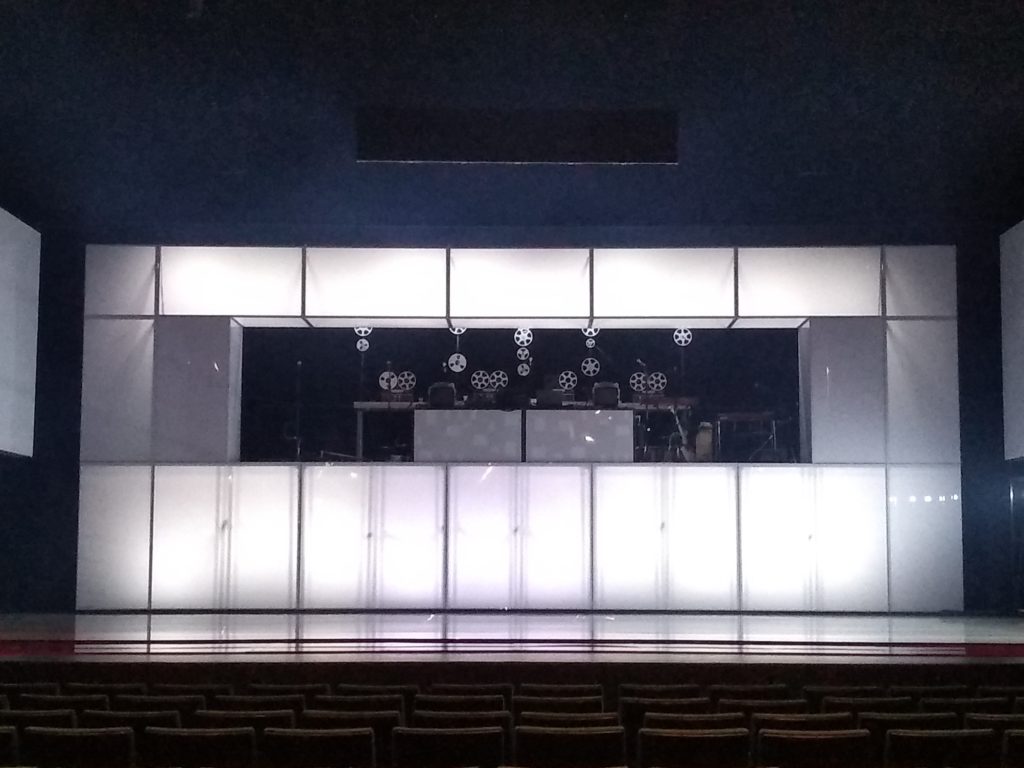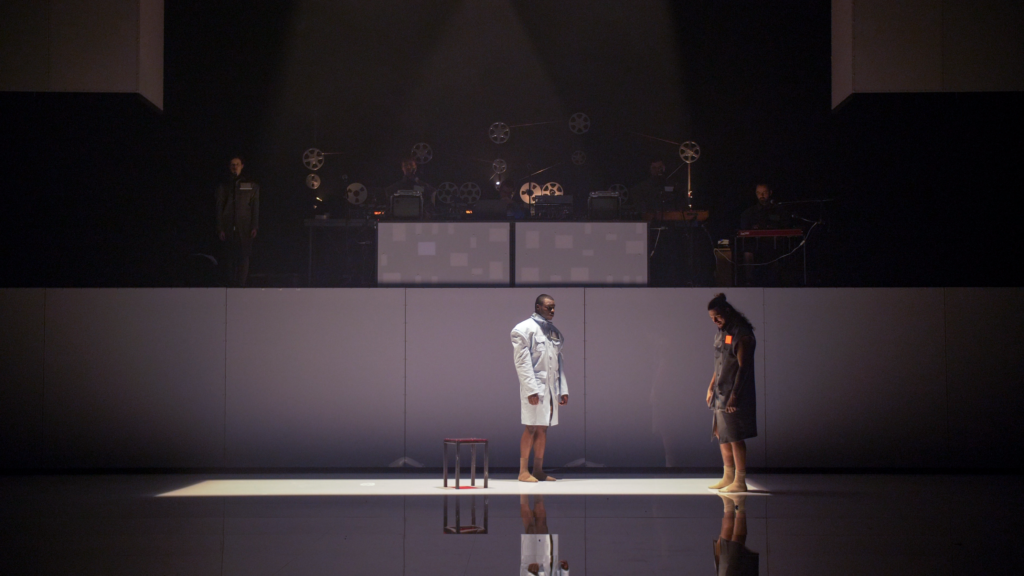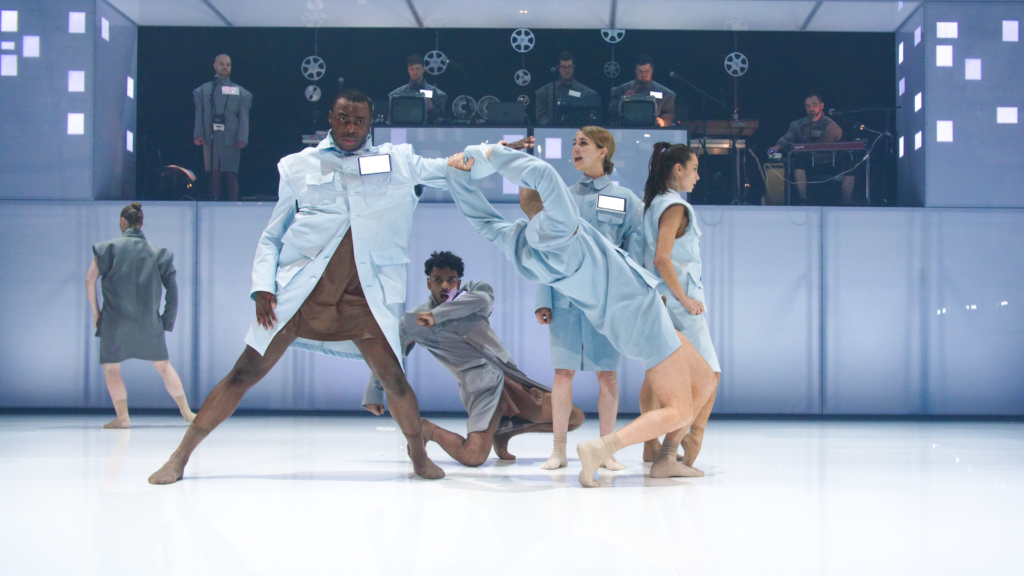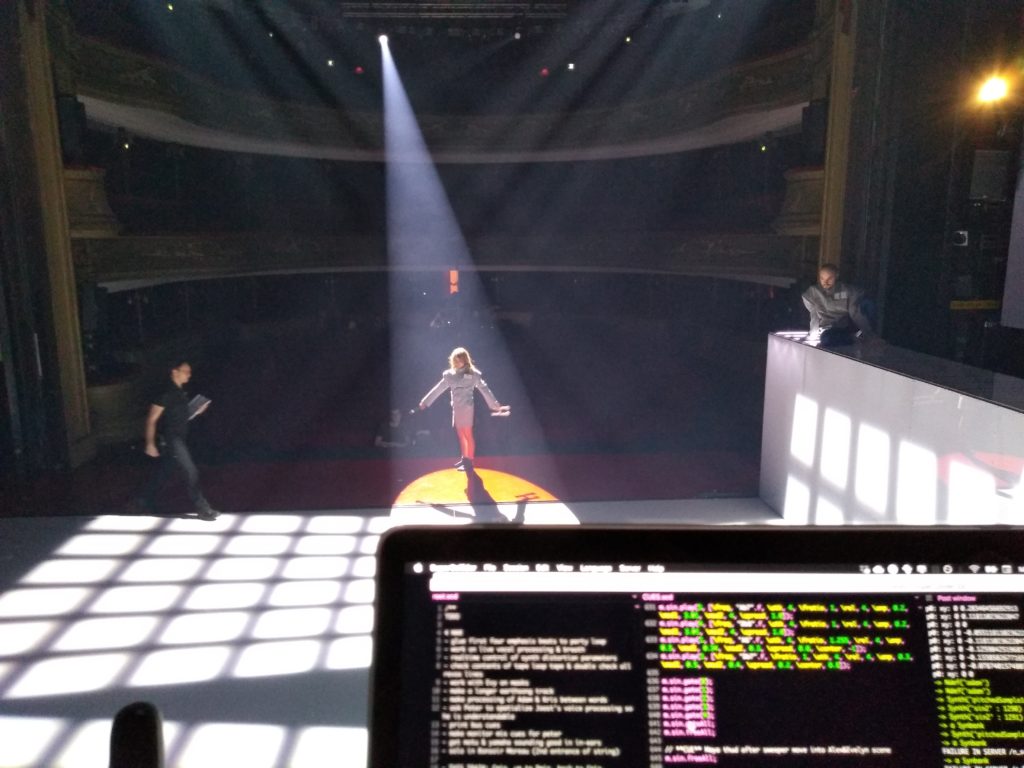Brave New World 2.0
commissioned music for theater and sound installation/instrument with obsolete recording media
Created in collaboration with Club Guy & Roni, Noord Nederlands Toneel (NNT), Asko|Schönberg Ensemble and Slagwerk Den Haag.
The sound and music ensemble of Brave New World 2.0 includes: Jonathan Reus (concept, direction, installation design, composition and live electronics), Peter Zwart (sound design, production & mixing), Niels Meliefste (percussion), David Dramm (music consulting & co-arrangements), Vitaly Medvedev (percussion), Noa Eyl (violin), Jeroen Kimman (multi-instrumentalist), Maya Fridman (cello), Helena Sanders (music consulting), Kyle Evans (co-arrangements)
Listen to the aftertalk podcast for Brave New World 2.0 here
Brave New World 2.0 is a contemporary theatrical re-imagining of Aldous Huxley’s classic sci-fi dystopia. Taking place in a future high-tech capitalist society run by advanced artificial intelligence systems, the play explores the complications of humanist beliefs during a time where what it means to be human is becoming increasingly banal and even ugly.
The musical material for the play originates in a careful selection of archival recordings documenting pre-20th century American folk music spanning the old South and Appalachian mountains. The core musical material from these recordings was then reworked through improvisation and re-recording with the ensemble, in the hope that we take an active role in the continuation of the transformation and transmission of this music.
On stage, situated in the rear of designer Ascon de Nijs’ minimal back-lit set is a large theatrical instrument constructed from obsolete reel-to-reel tape machines, as well as a complex routing system that routes all instrumental and vocal audio through a central computer where I perform via live coding. Much of the sonic performance is done with these old reel-to-reel tape machines in an instrumental fashion.
The idea to use archival folk songs as core musical material comes from the question of how to stage an “algorithmic end of history” instrumentally and theatrically. This theme is important in Huxley’s book. To have a stable society, the World Controllers ‘protect’ the citizens from their history by hiding it from them and brainwashing them. The process of history has stopped. The role of artificial intelligence is very important in the play, there are characters which are completely artificial and
there is this ubiquitous artificial intelligence system. These systems work through collecting massive amounts of history, of data and using algorithms that learn patterns to predict future events from that data. So this is a system that is constantly giving you reconfigurations of the past. It’s another kind of “end of history” that is represented by the recording and re-recording of happenings on stage.
Direction, dramaturgy, production: Guy Weizman, Wim de Vries, Tim Verbeek, Robbert van Heuven
Choreo & Dance: Roni Haver + the choreographers and dancers of Club Guy & Roni
Actors/Dancers: Julia Akkermans, Bram van der Heijden, Bram van der Heijden, Joost Bolt, Bien De Moor, Angy Revengy (aka. Angela Herenda), Harold Luya, Camilo Chapela, Olaf Air Tami, Igor Podsiadly, Annemieke Mooij, Sofiko Nachkebiya , Arno Atele Verbruggen, Georgia Lyell Harbour Judith Schuur, Lodewijk Walther Boer, Momo Samwel, Terencio Douw
Costume design: Evgeniia Shalimova + Helga Richter (production)
Script: Rik van den Bos
Set design: Ascon de Nijs
lighting design: Tybert Jan Maters
interactive light installation: WERC collective
Category: Music
